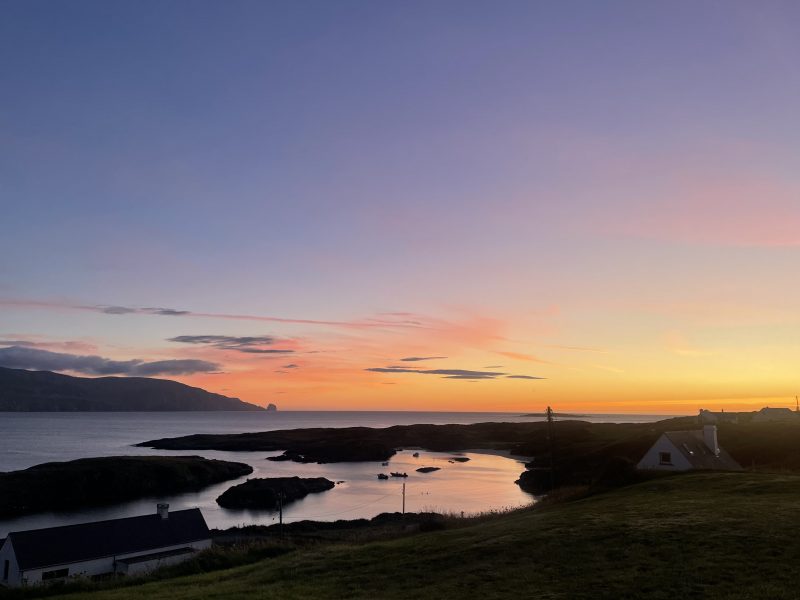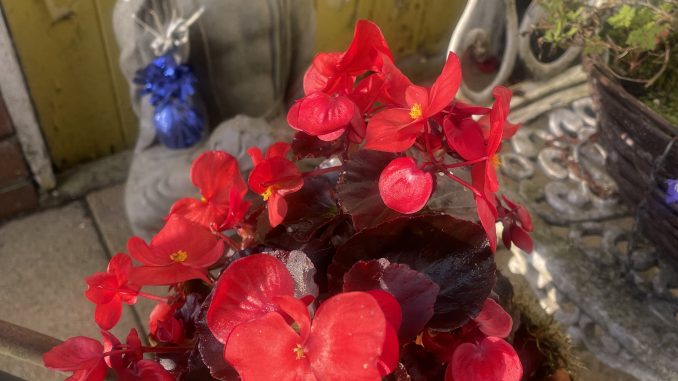
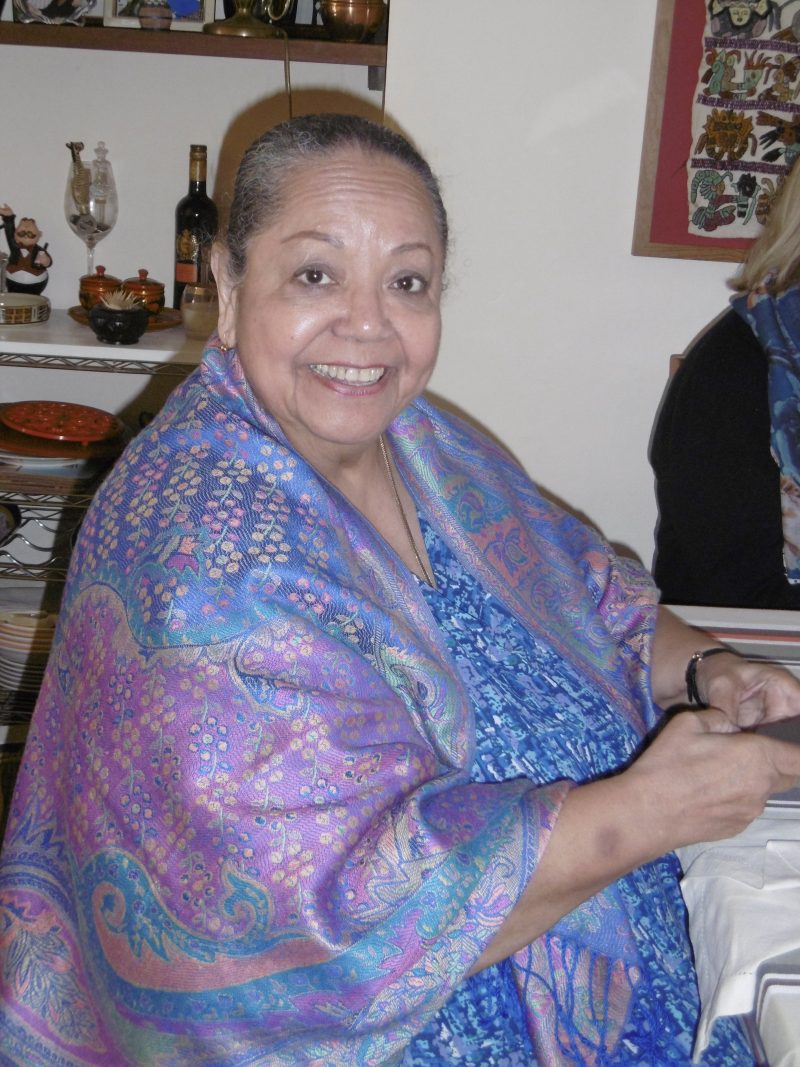
Where do I begin? It was a shock to received the phone call on Wednesday to say Candy Devine had died. She was the sort of woman you expected always to be there, always in the public eye and always in the lives of those she cared for. It seemed I’ve known her all my life, she was a friend and a mentor, she had the God given ability to listen and gently respond.
I have two special pictures amongst my memory souvenirs, an Arts Theatre late night show, wearing black with a pink feather boa, she sang Joni Mitchell’s Both Sides Now – ‘Rows and floes of angel hair, and ice cream castle in the air, and feather canyons everywhere, I’ve look at clouds that way’. It was magical, slow and powerful. The other memory was visiting her in Dublin when she was appearing in the Gaiety Theatre; I stayed with her and her dear mother and in the morning I popped into her bedroom to say goodbye. Candy always had her hair tied back in a chignon, ‘pull it tight and you get a face lift!’ But that morning her hair was all round her, spread over the white pillowcase and she looked so beautiful, like a little girl rather than the sophisticated woman of the arts.
Artistic Director Roy Heayberd worked with her many times and recalls when she played Ciaphias the high priest in Jesus Christ Superstar. “Before opening night she hurt her ankle but still went on stage, a crutch supporting one side and her young son the other! She was a joy, a lovely outgoing lady.” En route to New Zealand he even stopped off in Brisbane to spend time with her and he was not the only one, she commanded love and respect.
Candy was awarded an MBE in 2014 for services to broadcasting and to the community in Northern Ireland. Broadcasting we know about but her charity work not much. Apart from other things she was a Lady Tavener fundraising to help support young people with special needs and from disadvantaged backgrounds. I’ve watch her present buses to youth groups, getting down to play skittles with children and publicising the charity using the curling equipment donated by the Knights baseball club.
When Kenny Elliott worked for Save The Children she travelled with him to Angola and was horrified that the land mines they saw were made in Sheffield and designed to jump out of the ground and hit soldiers knees but with children they hit the chest and face. “She was very upset to see so many young people on crutches but she gathered them round her and they sang and danced. The same in Bulgaria where we visited the street children; even though we were told they might be violent she said, ‘Come on Denny darling, don’t be afraid.’ It was the only time I saw her cry. We witnessed the children effected by cerebral palsy, teenagers, tied into cots and just looking up at us with no life in their eyes. It broke her heart.”
Born in Cairns Australia she came to London to follow a career in music but found it difficult to get digs because of her skin colour and suffered abuse on many occasions. She was in fact a Torres Strait Islander of both Polynesian and Danish heritage and it’s ironic that when she appeared on Australian TV in Skippy The Bush Kangaroo, she had to have dark makeup and a wig because she was nothing like the Aboriginal character she portrayed.
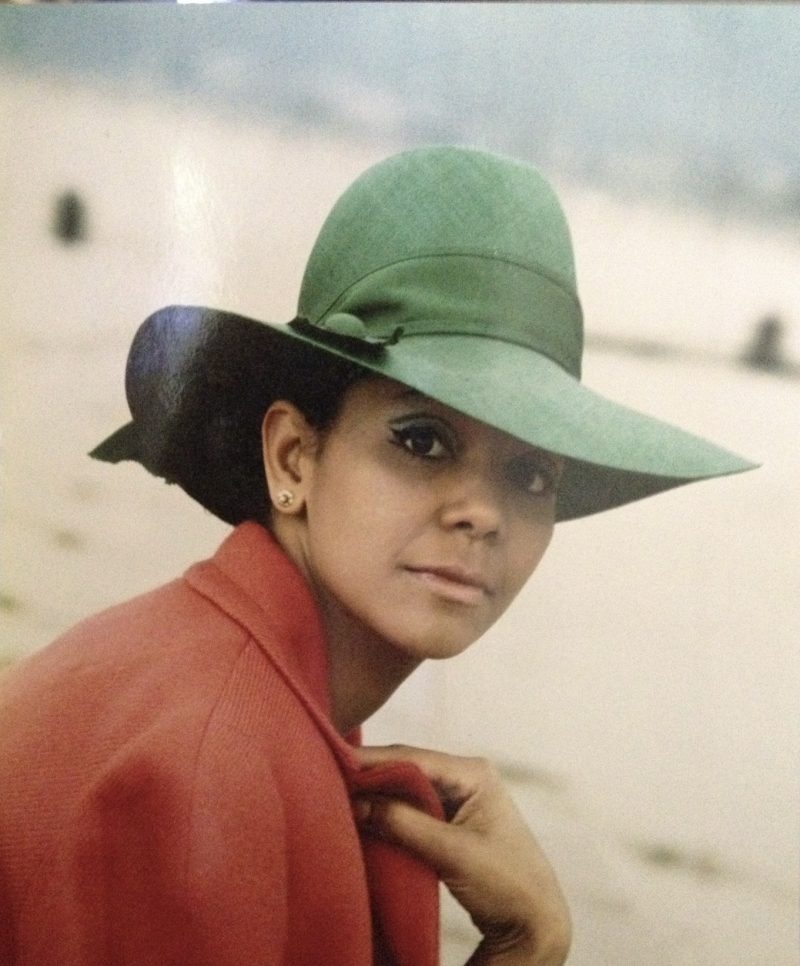
In late 60s she was spotted by Ulster impresario Donald McLeod who persuade her to come to Belfast, fell in love with her, married her and remained her manager until his death in 2012.
A year after Don died, Candy decided to return to Australia to live with her family in Brisbane. We were sad to see her go but she didn’t leave us, emails and Facebook messages flew back and forwards until last week. One of her closest friends, Jill Ellis flew to nurse Candy when she was in hospital and for two weeks they talked and talked. “I balanced a tape recorder on Candy’s chest and recorded everything. We laughed and cried and shared our long and happy friendship. She asked me what I would like by way of thanks, nothing was my reply and then I thought, she’s a talent painter what about a self portrait. It now hangs in a place of honour in my home.”
Despite being in a nursing home her messages were always positive and her first question was “How is the family?” Then she’d go through each one until she was happy she’d caught up with the news. I’d a phone call on Thursday from my Charlie teenage grandson asking is it true that Auntie Candy was dead. They had a charming friendship and she always mentioned him and sent love. She did that with everyone she cared about and she cared about everyone.
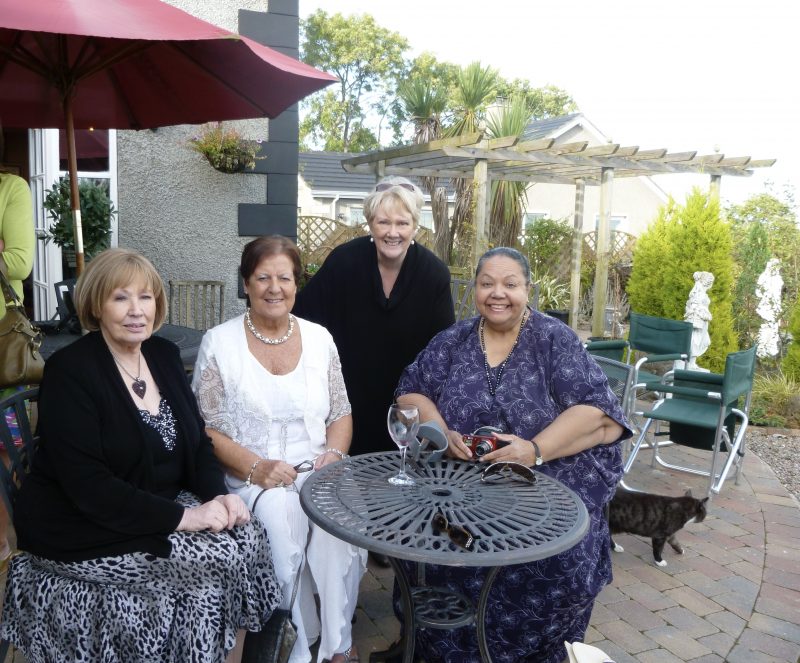
I once asked her for her abiding memory and she didn’t need to think twice. It wasn’t appearing in Skippy, not even the ground breaking programmes on Downtown but her appearance at Sydney Opera House when, in amongst big band numbers, accompanied only by piano she sang Danny Boy.
She always made a glorious impact.
Singer David Hamilton summed her up. “A lady who was graceful, spirited and as her name suggests, Devine.”
With much love and sympathy to Fiona, Gordon, Ian and her chef son Alistair, her grandchildren and her great grandchildren.
This Obituary Appeared In Yesterday’s Irish News
BELFASTMAN’S TAKE ON BASHRA
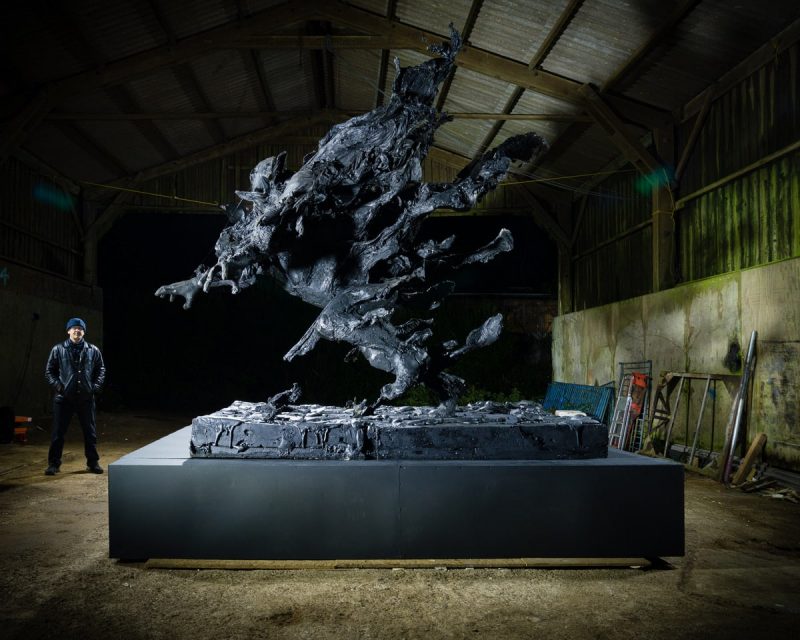
Tim Shaw and his massive sculpture Man On Fire.
Member of the Royal Academy of Arts, he said last week that he was deeply honour to have been announced winner of the prestigious 2024 Marsh Awards for Public Sculpture. The Belfastman’s enormous work was acquired by the Imperial War Museums North last year and now sits outside their front door in Manchester.
His remarkable sculpture is influenced by several events: a visit to Pompeii, images from the Iraq War, the Glasgow Airport terrorist attack in 2007 and a personal experience during the Troubles when he and his mother were caught in a bomb blast in Belfast. This is reflected in the tortured man on fire as he lunges forward in panic, his fingers stretching towards safety, his face distorted in fear and pain as he is caught between life and death. Giving Man On Fire birth was a colossal task which involved the casting and welding together of over one hundred separate pieces of bronze onto a steel reinforcement with the entire image balancing on one area of the foot. Then it had to be transported on a massive low loader from Tim’s studio in Cornwall to its place outside the museum. This remarkable sculptor has come a long way since his art master noticed how he modelled in clay and encouraged him to concentrate on studying this art form to a man who is creating a reputation around the world.
SO MANY BLASTS FROM THE PAST
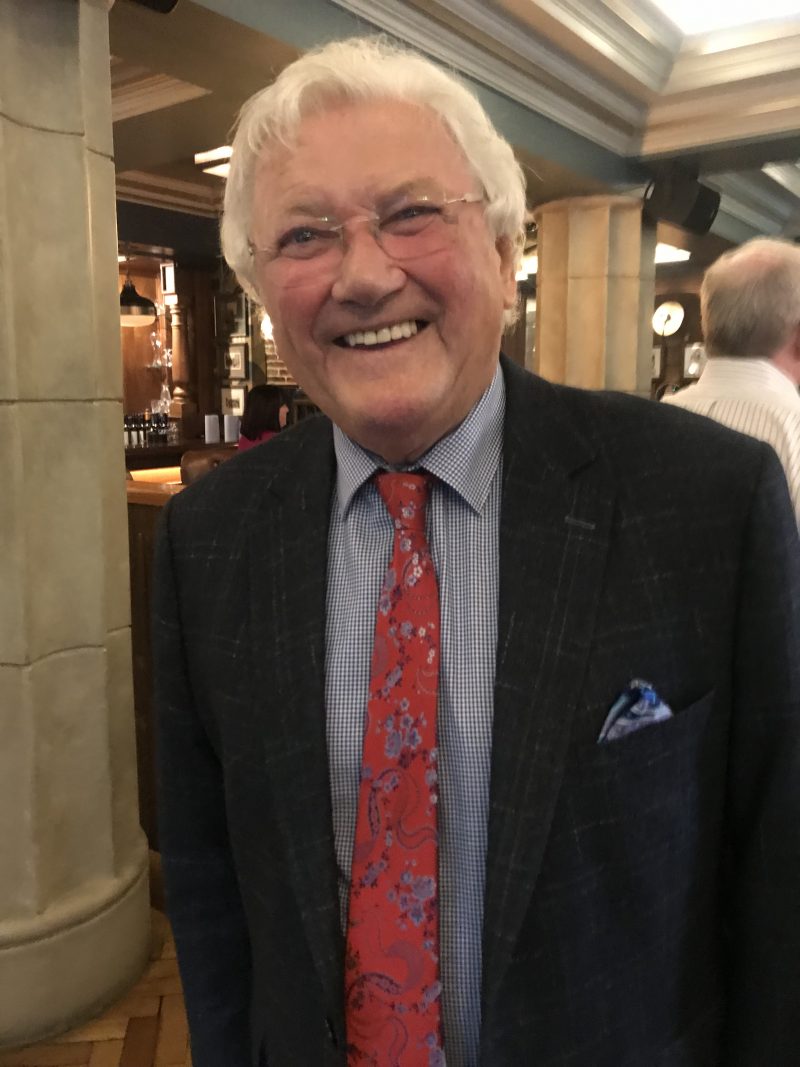
Hallowee’n took on a new meaning in 1959. It was the day Ulster Television opened its doors to the public, initially in the Belfast area but destined to become a station popular in the west, down south, even across the sea to Scotland. Thursday was the 65th anniversary of that day and many ‘TV types’ met over lunch yesterday to celebrate and to talk over our wonderful lifetime in television. It was a family occasion, all our dear friends turned up , Eamonn Holmes travelled to be with us despite the difficulty he is undergoing, Jackie Fullerton was his usual funny self, Mike Nesbitt remembered the days when he was top presenter and Miss Adrienne met some of her Dooby children from Romper Room, all grown up now. There can’t be many organisations where up to 70 colleagues will meet, some of them dating back to 1959. And the thing is we are in touch with each other all round the year so this is genuine friendship.
I find it very pleasing to know that much of the old film stories from UTV are being archived and made available to the public. For instance you can view 650 clips reflecting programmes and events just by visiting the local library, all part of the British Film Institute Replay project. Or, if you want to sit at home and be entertained, the Digital Film Archive is a treasure trove of 1000’s of hours of programmes. It’s enthralling, it will bring the older viewer back years and the younger viewer will be fascinated. I’ve had a sneak preview – Charlie Witherspoon features strongly! I make an appearance during a production meeting sitting beside the man who was eventually to become my husband, although neither of us knew it at the time!
To access digital archive material for home viewing the link is https://digitalfilmarchive.net
FACING FACTS
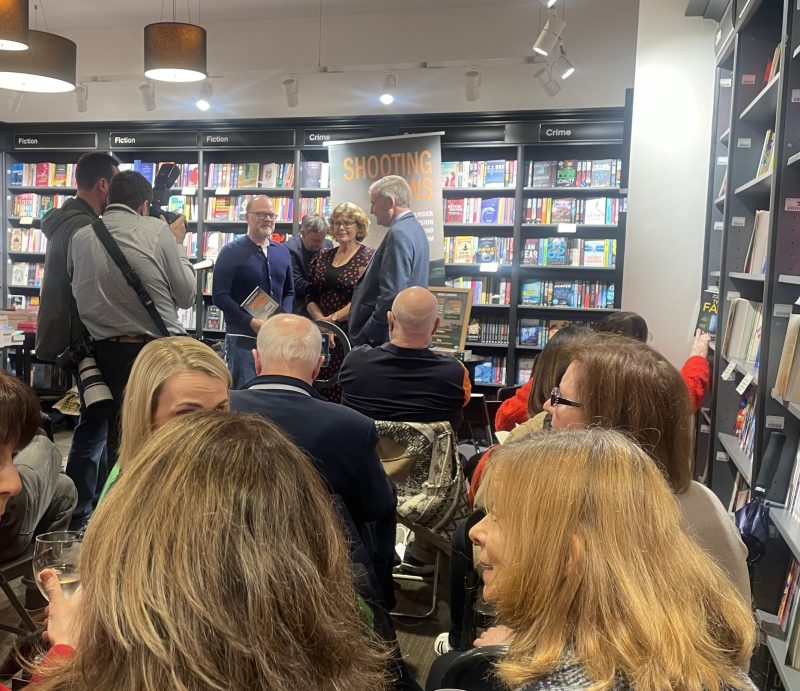
A dark wet Thursday evening in Belfast. People gather in Waterstones book shop for what turns out to be a memorable event. Trevor Birney is launching his book Shooting Crows, Mass Murder State Collusion and Press Freedom.
Never far from his side was his colleague and fellow journalist Barry McCaffrey who, with Trevor, produced the documentary No Stone Unturned which opened the flood gates of knowledge and the trauma of the Loughinisland massacre, not only for the families but also for the two journalists. People kept arriving to the launch, some had travelled from Loughinisland not far from Ballynahinch, some were colleagues in the media, there were representatives from the legal profession and a multitude of others.
Noel Doran, until recently editor of the Irish News, set the scene, the build up to the killings in the pub in the Co. Down village and he read the names of the six local men who, at ten past ten, were mowed down where they sat enjoying an evening of craic over a drink on a Saturday evening. You can just imagine the banter as they watched the Republic of Ireland play Italy in the 1994 FIFA World Cup and win.
As he recited the names there wasn’t another sound only Noel’s voice. It was a powerful look at history both past and present.
Susan McKay then interviewed Trevor on the background of the story and it was chilling. One word kept being repeated – collision: ‘an agreement between people to act together secretly or illegally in order to deceive or cheat someone’. The people involved were the security forces and the RUC.
The book makes compelling and disturbing reading. As well as the six Catholic men shot to death by a loyalist murder gang, more were injured and the wave of grief continues to this day and will do so beyond this day.
Loughinisland is still reeling from what happened on that June evening, so are the two journalists involved. Shooting Crows: Mass Murder, State Collusion and Press Freedom, is published by Merrion Press.
Winter Draws Nearer Every Evening
